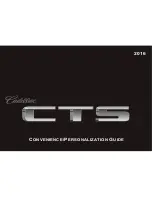
--17--
Start-up and Function Test:
After connection and setting of the charging converter, the function can be tested:
1.
Start the vehicle:
-
The charging converter will be activated and starts with 3% of the maximum charging capacity.
-
The LEDs "Power”, "Start IN”, "Board OUT” and "Main Charge" will be lighting, LED "Current” is lighting dimly.
2.
Increase the speed of the vehicle to increase the voltage at the starter battery until it exceeds the adjusted value for
the "increase of the charging capacity".
-
The charging capacity will be increased and is raised to the maximum value or to the required value of the charging
characteristic line, if the board battery is already full.
-
The lighting intensity of the LED "Current" will be reduced or increased depending on the charging current.
Tips:
Unit does not start, the LED "Power" is not lighting:
a.
Check the voltage at the activation input terminal "D+", > 8 V.
b.
In case of pure voltage control, check the voltage rates directly at the terminals according to table 4.
Full charging current is not reached:
c.
Check the adjustment of the slide switches "OUT Limit" according to table 2.
d.
Board battery is already charged: Turn on devices with high current draw.
e.
If required, deactivate the function "IN Limit" shortly for reasons of testing: Both switches to position "right".
f.
Start IN
Sensor Cables ("VS-"/"VS+"), if used: Check connection, insulation, polarity.
g.
Board OUT
Sensor Cables ("VB-"/"VB+"), if used: Check connection, insulation, polarity.
h.
Never mix up the sensor cables Start IN
("VS-"/"VS+") and
Board OUT
("VB-"/"VB+"),
otherwise the voltage control
of the unit will be led astray: check.
Full charging current is not reached, the LED "Start IN" is flashing:
i.
Check the voltage at teIN Start: >11.5 V. Increase the engine speed, in order that the charging converter is able
to regulate to a higher voltage.
j.
Check cabling –Com, +OUT board and fuse I. Check cross-sections and lengths according to table 1. If used, check
cables Vs- and Vs+, Vb- and Vb+, as well as stripped cable ends. Measure the voltage directly at the terminals/their
screws.
k.
Check the cIN Start, fuse 2, cross-sections and lengths (also "minus" connection to chassis, if required, cable
"-Batt." from the starter to the board battery) according to table 1.
l.
Concealed battery cutoff relay (such as in EBL, EVS) bridges the charging converter: Check connection plan.
Operation with EBL, EVS etc.:
m.
The charging converter changes permanently between active and quiescent condition: "D+" must arrive directly from
the vehicle, and not from the EBL.
Function of the Power Control at Starter Battery and Generator:
The charging converter is voltage-controlled or activated via the control input "D+". It will be deactivated automatically if
the engine is switched-off. It starts with 3 % of its achievable charging capacity.
The setting of the two slide switches "D+ / Vs and Low / High" (see tables 4, page 15) now affects the further load of the
starter battery circuit supplying current to the charging converter.
After the engine start, also the starter battery shall be charged immediately and its starting capacity shall be maintained.
Therefore, the charging converter does not start charging the board battery, before the voltage value "increase of the
charging capacity" of the starter battery is reached.
The gradual increase of the charging capacity for the board battery by the charging converter will be effected, if the voltage
value "increase of the charging capacity" of the starter battery is still reached and exceeded.
In case of strong load on the starter circuit due to many large consumers and the starter battery’s voltage drops again
below the value "reduction of the charging capacity", such as during engine idling, there will be a gradual reduction of the
charging capacity for the board battery to relieve the starter circuit. But the minimum charging capacity will always be
approx. 3 % of the achievable charging capacity.
If the voltage drops below the "Switching off threshold" for 30 seconds, the charging converter will be switched-off
automatically. As soon as the voltage exceeds the threshold "increase of the charging capacity", the converter will be
switched-on, and the capacity will be increased gradually until the required (maximum) charging capacity is reached.
A reduction of the charging capacity by more than 30 % due to insufficient input voltage of the generator will be indicated
by a flashing LED "Start IN". The LED will turn off, as soon as the input voltage is sufficient or when the power requirement
had dropped anyway due to a charged board battery.
The charging converter simulates a larger consumer load at the generator/starter circuit to ensure an activation also with
Euro 6 vehicles with intelligent generators, if required.




































